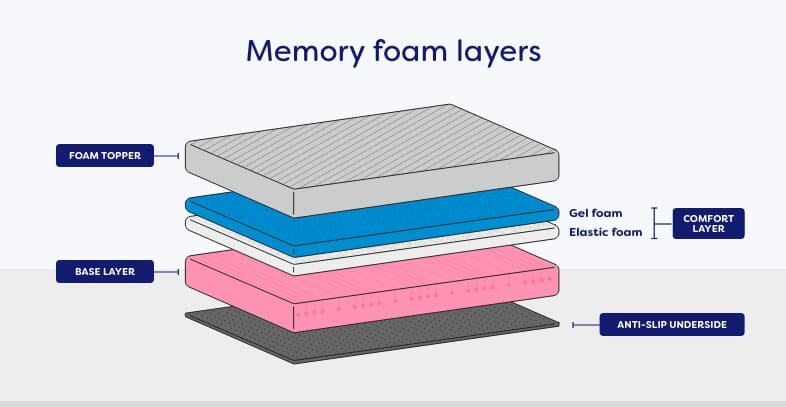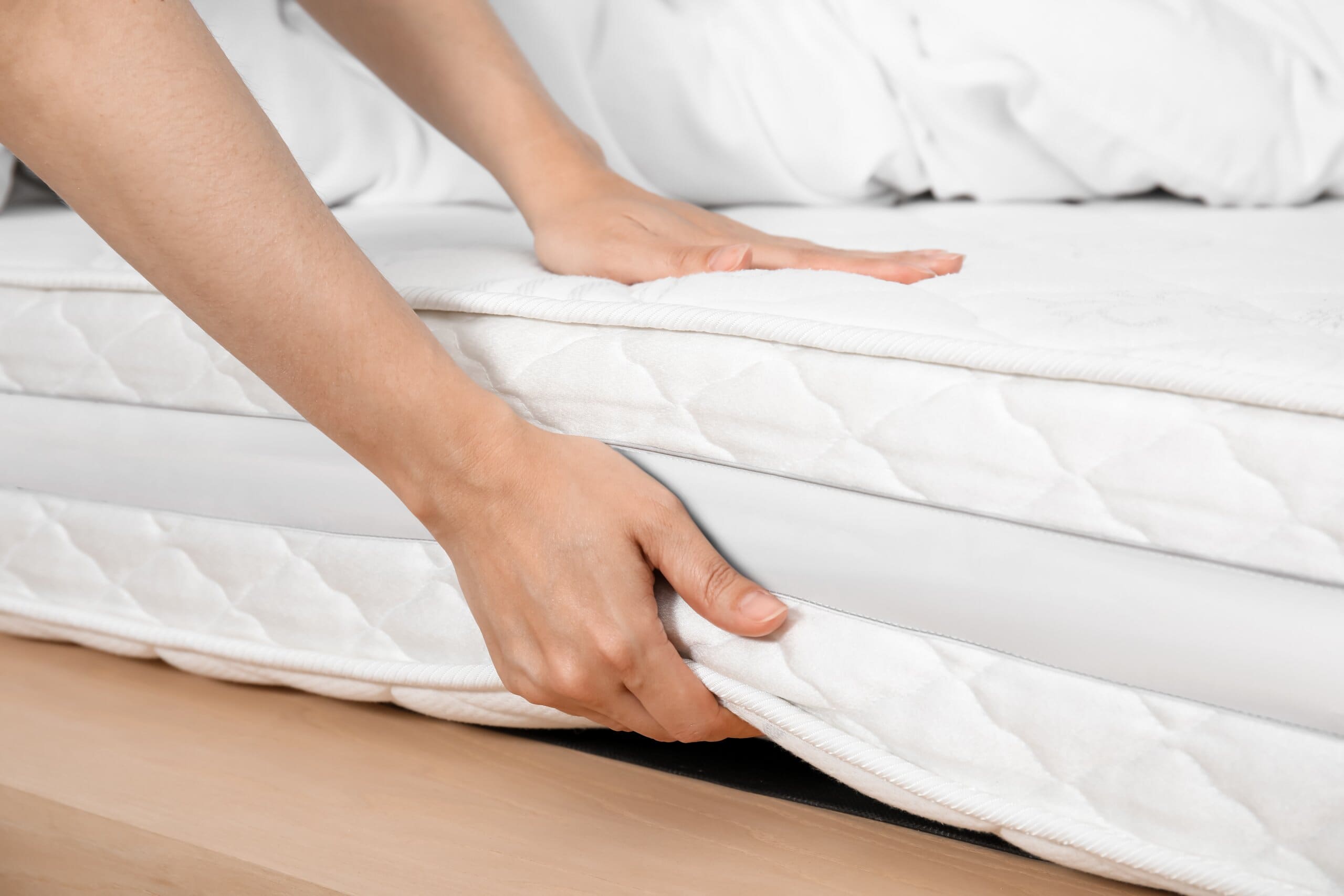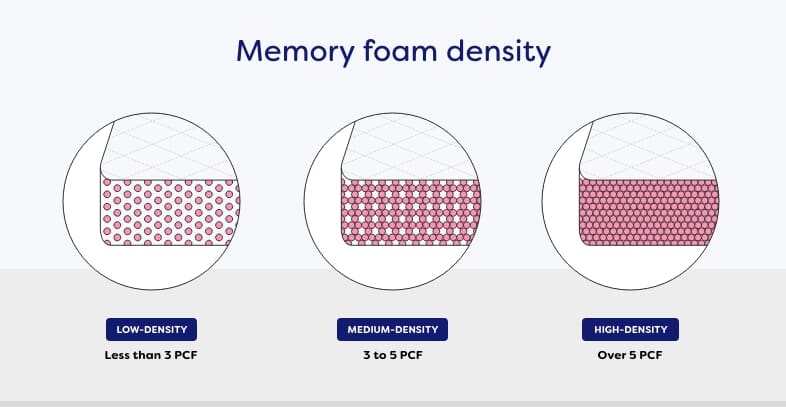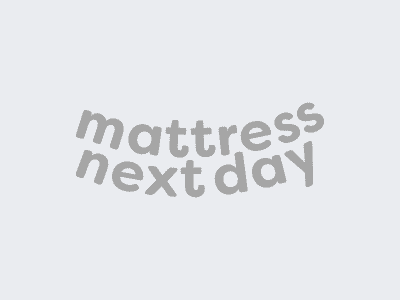Last updated: February 2025
Memory Foam Thickness And Density Guide
Confused by the memory foam jargon? Our product experts explain how to choose the best thickness and density for your mattress.
The thickness of your memory foam mattress can transform your sleep. Thickness helps you achieve a cushy, luxurious bed, and contributes to your overall comfort throughout the night.
Once you know how thick you need your mattress to be, you should also consider density. We offer a range of densities and firmnesses which determine exactly how it feels as you lay down, as well as the levels of support you’ll experience.
If you've just purchased a memory foam mattress, you may also want to have a read of our tips on making your memory foam mattress cooler, as well as advice on how long it takes memory foam to expand.
Why is the thickness of a memory foam mattress important?
Memory foam mattress thickness is important because it helps contribute to good sleep and therefore good health – choosing the right thickness for your needs will provide body-conforming support.
Thickness is often confused with density, which refers to how heavy the memory foam is compared to how big it is. Density affects longevity and durability, whereas thickness is how high the mattress is when it is on your bed frame. Learn more with our guide on memory foam density.
Memory foam has several layers that vary between manufacturers, but the two most important are comfort and base.
- Comfort layer: the top layer which moulds to your body and relieves pressure and pain.
- Base layer: the layer underneath everything that offers support and prevents the material from sagging.

How thick should a memory foam mattress be?
The recommended thickness of memory foam mattress depends on what you find comfortable. There is no right or wrong answer for how thick, and therefore how high your bed should be.
How thick is a memory foam mattress?
The average mattress thickness is 10-12 inches, enough for a good amount of support for adults. This does of course vary depending on the mattress type, however, you can go thicker or thinner if you find it more comfortable.
Memory foam mattress thickness
- 2 to 5 inches: Low mattress
- 5 to 8 inches: Slim mattress
- 8 to 12 inches: Standard mattress
- 12 to 16 inches: Thick mattress
- More than 16 inches: Extra thick mattress

Our sleep experts advise that the top of your mattress should be 25 inches from the floor, so you can comfortably get in and out of your bed. The height of your bed frame will of course play a part in this.
Choosing your memory foam mattress thickness
There are a few things you should consider when choosing how thick your memory foam mattress needs to be to be right for you.
Bed height
You need to consider your bed frame when choosing your memory foam mattress thickness, as this will add height to your sleeping surface.
Whether you want a low-profile mattress that is closer to the floor or a high-profile mattress with plenty of cushioning, you should measure the frame and add its height onto the mattress thickness. This will help you calculate how high your bed will be against your body when you get in and out of it.
If you're choosing a new bed frame for your memory foam mattress, read our guide on The Best Bed Bases For Memory Foam, so you'll be sure to get the most out of your purchase.
Sleeping position
Sleeping position can influence which thickness you should go for. If you sleep on your side, a 12 to 14-inch thick mattress will offer extra cushioning for your pressure points such as shoulders, hips, and knees. Back and front sleepers can use a 10 to 12-inch mattress for ample support and comfort, preventing sinkage in the lower stomach and back area.
Aches
If you experience body aches such as back pain or even arthritis, we recommend you choose a mattress with the most comfort and cushioning. Mattresses that are 12 to 14 inches thick are recommended for people with medical conditions as the viscoelastic foam moulds to your curves, helping relieve pressure from any problem areas you may have.
Body weight
People who weigh more will sink deeper into a mattress and may need something thicker than lighter people. We’ve provided the below thickness recommendations as a guide, but the mattress you choose is ultimately down to personal preference:
- Under 9 stone: a thin mattress between 5 and 8 inches will be suitable for this weight.
- 9 to 16 stone: thin mattresses may feel too firm, so something between 8 and 12 inches will offer good pressure relief and contouring.
- Over 16 stone: choose a thicker mattress that offers support and comfort, and is at least 12 inches thick.
What is memory foam density and how is it calculated?
Memory foam density refers to how heavy the material is compared to its size. Density impacts mattress longevity, durability, and support – a high-density mattress often has better longevity.
Memory foam density is measured in pounds per cubic foot (PCF). Foams that are higher density have a higher PCF because they have more foam in one area than a lighter-density foam. For example, a memory foam that weighs 200 pounds and measures 30 cubic feet would have a density of 6.6 PCF (200 divided by 30).

What is the best density for a memory foam mattress?
The best density memory foam mattress for you depends on what you want from your mattress.
Durability
As a general rule, low-density foam is less durable than high-density, with high-density choices often lasting twice as long as low-density. If you want longevity, go for a higher density mattress.
Pain relief
A high-density mattress is preferred by people who have body aches and pains as it helps to evenly distribute body weight and offers greater levels of support.
Bounce back
Low-density mattresses return to their original shape quicker than high-density mattresses, which may make low-density more suitable for those who need to make it easier to get in and out of bed. However, they don’t offer as much support as high-density foam.
Price
Like other products, the amount of material used to produce something increases its price. Therefore, lower-density mattresses are cheaper.
Body contouring
How much the memory foam mattress contours to your body shape depends on density – higher-density mattresses provide more contouring.
| Low-density | Medium-density | High-density |
| Less than 3 PCF | 3 to 5 PCF | Over 5 PCF |

Which memory foam density is best for me?
Match the memory foam density to your sleeping position for ultimate comfort.
| Sleeping position | Memory foam mattress density |
| Side sleeper | Medium density which offers both comfort and support |
| Back sleeper | Because the spine stays in a neutral position, back sleepers can base their decisions on how much contouring and cushioning they’d prefer |
| Front sleeper | High-density foam to support the lower back |
| Combination sleeper | A mix of foam densities |
| Restless sleeper | A mix of foam densities |
| Sleepers with joint pain | High-density foam to support your body |
What is ILD?
Density plays a big role in how a mattress feels, but it does not indicate the mattress’s firmness. When looking at firmness, you should pay attention to the ILD or indentation load deflection, which measures the force needed to compress the foam. The ILD rating indicates how firm the foam material is.
The ILD you should choose depends on different things such as preference, which positions you sleep in the most, and body weight.
| Soft | Medium | Firm |
| Less than 19 ILD | 19 to 49 ILD | Over 50 ILD |
We offer a huge variety of memory foam mattresses, in a range of different thicknesses and densities. You can easily find the perfect memory foam mattress for you, personalised to your unique needs and preferences. If you're not sure which is best for you, read our guide to the best memory foam mattresses to find your favourite.



If you’re not certain what thickness or density is right for you, look out for the Sleep Trial logo on selected mattresses. You can try out any of these mattresses to see if it suits you, and if it doesn’t, simply return it and try another! For more information on our Sleep Trials, see our Sleep Trial page.

